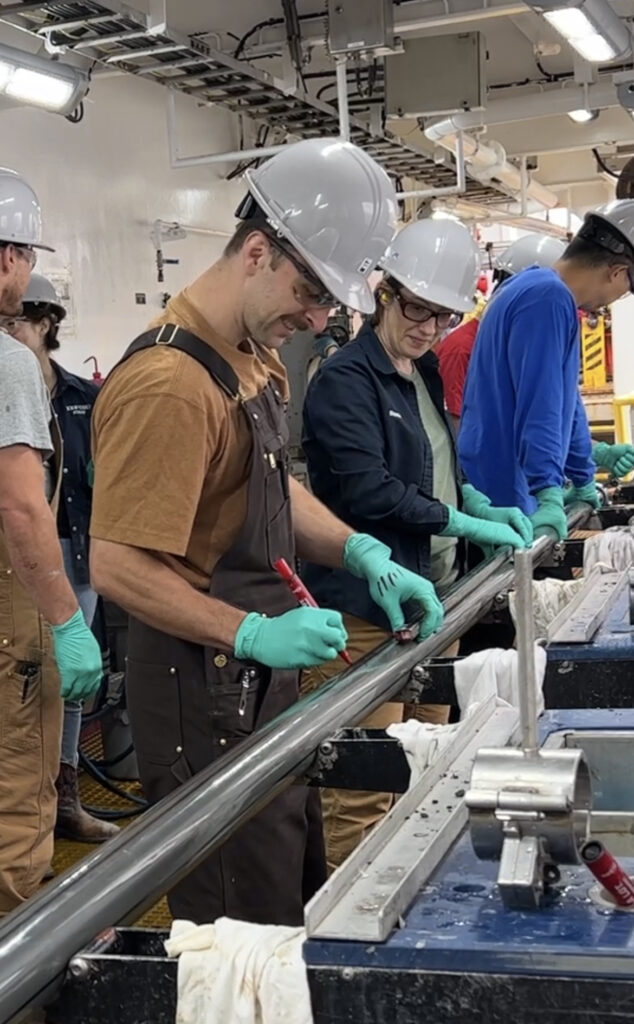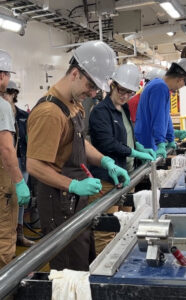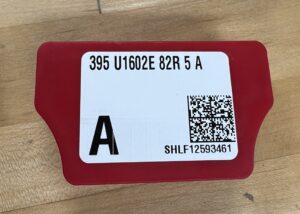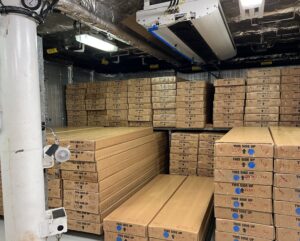
The Core Story

What happens to all that Core?
Every core is priceless. The information that can be obtained from cores is immense and ever changing. With new discoveries in technology, we are able to

access more information from older cores. Think about the advent of microbial DNA technology. This type of research can now be done on cores that were taken before mainstream DNA analysis was even a thought. If all these cores are so precious, what is done to ensure their safety and longevity? Call in the core curator for the answer!
The core curator on the JOIDES Resolution has a pretty important job: the safeguarding and organization of the core. The curator on Expedition 395 is James Kowalski and his job begins even before the first core is brought onboard. James works with the co-chief scientists and the Expedition Project Manager to devise a sampling protocol for each site. When the 10-meter (~32 ½ ft) core first arrives on deck and is laid out, it is James’ responsibility to mark and label each section with marker. Sections are cut approximately 1.5 meters (almost 5 ft) long and capped (the blue cap is always up). The cores come into the core lab and are laser engraved with the IODP logo and their number. The number system is consistent throughout the IODP and includes the expedition, the site, the hole, the number, the type of drill, and the section, then the half. After cores are split, half will always be kept pristine and not sampled, this is the archive half. The other half, the working half, will be used for sampling by the science party and then in the future, for any scientist who requests a sample.
Any imaging or data taken from the cores is James’ responsibility as well, it gets uploaded onto a computer program and collated according to the core number. Samples taken are labeled with the specific number and section of the core. Using this method, the archivist can ensure that all of the information from each core stays associated with the correct core. This may sound easy, but Exp 395 has already brought over 450 cores (almost 3 miles) on board, this means there are over 900 core halves onboard! When the description and ship sampling are done, the cores are individually wrapped, put in a hard plastic sleeve, and then boxed. The boxes are taken down to a cold storage facility in the bottom of the ship where they will wait for the end of the expedition.


Where do they all go? Cores end up in one of three core repositories. Repositories are huge refrigerated spaces (4.4°C/40°F) that keep thousands of cores from all over the world. The Gulf Coast Repository (GCR), located in College Station Texas, holds over 100km (more than 62 mi)of core in 1393 square meters (15,000 square feet) of space. There are two other repositories, one in Bremen, Germany and the other, Kochi Core Center, is in Japan. Cores are sent to repositories based on the ocean basin from where they are taken. Because Expedition 395 is in the Atlantic, our core will ultimately end up in Bremen, Germany.
Some of the cores from out new site, will take a detour via GCR to Scripps for X-Ray Fluorescence scanning. The science team will come together in January to complete the sampling of the core. These samples will help further their personal research projects. After one year, the data moratorium will be lifted and other, non-expedition scientists, can apply to sample.
What does James do when he is not on the ship? He works in the GCR helping to maintain the cores and the coordinate sample requests from scientists all over the world.